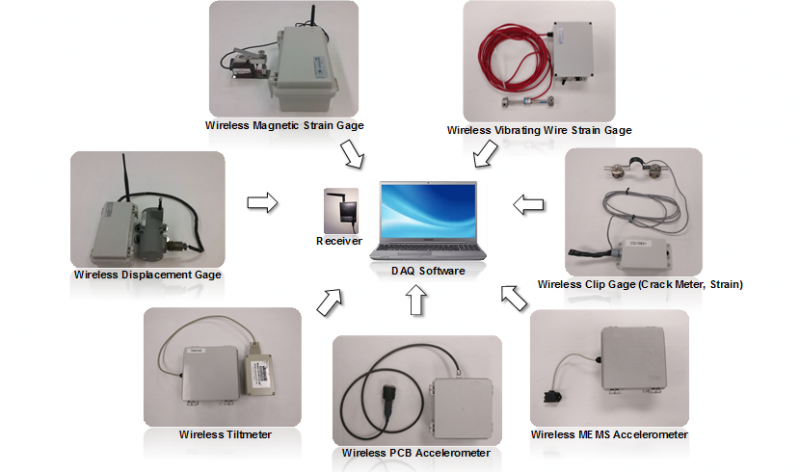
Multipurpose Wireless Sensors for rapid Assessment of Bridge Structures
Dates: 2013-2018
Location: Drexel University
PIs: I. Bartoli, A. E. Aktan, P. Sumitro
Executive Summary
Under FHWA EARP funding the researchers have explored whether it is possible to transform the most reliable and proven wired sensors into wireless operation to achieve rapid assessment of bridges.
The sensors that were selected were: (1) Resistive strain gages; (b) Clip Gages; (c) Vibrating wire gages; (d) Displacement transducers employing wire potentiometers; (e) Tilt-meters; (f) Seismic accelerometers. Each type of sensor was successfully untethered from power, data acquisition and communication cables by locating in-situ power, conditioning, data acquisition and communication IC boards in small boxes, and the sensor readings were transmitted wirelessly to any portable computer. All the sensors previously described have been extensively tested in the laboratory and were also tested in the field and have been presented to a committee of experts (representatives from NASA, Volpe Center, Penn DOT, FHWA, Minnesota DOT) as part of a Technology Readiness Level (TRL) assessment on June 6th, 2017. The TRL panel concluded that the technology had reached a TRL between 4 – “Components validated in laboratory environment” – and 5 “Integrated components demonstrated in a laboratory environment”. Since then, the researchers have continued the development of the wireless sensing platform and followed the TRL feedback received to identify scenarios and use case development, and to develop a set of requirements for the identified use cases based on stakeholder needs.
With the above set of sensors or transducers, it is currently possible to measure: strains, deformations or distortions, displacements, rotations, and accelerations along with a wide frequency bandwidth. These sensors (in conjunction with imaging) offer an excellent capability for measuring structural and environmental responses of any highway structure, at an appropriate frequency.





